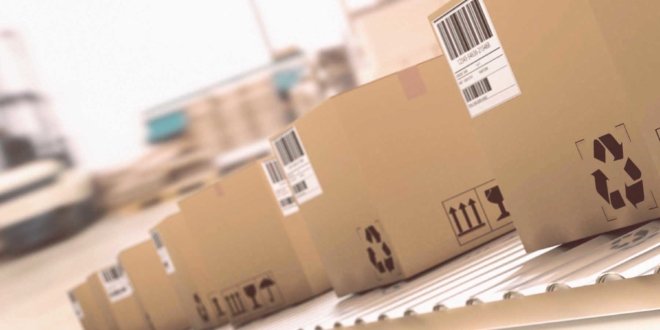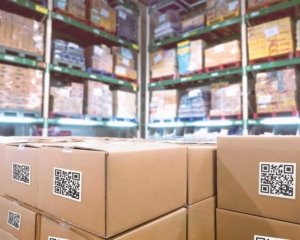Serialization is the application of serial numbers onto the packages of a product. These numbers usually take one of a few forms:
- Barcode — been around since 1951
- 2D or data matrix (QR code)
- Human-readable alphanumeric code
Speak to a Serialization Expert Today
Application is typically done at the packaging line, where each level of packaging (carton, case and pallet) is serialized and linked, or aggregated, so that all package levels are associated.
Serialization can start in the manufacturing process through use of manufacturing execution software.
 Serialized raw materials can be aggregated into a batch number, which is then fed through a company’s ERP system and to the packaging line.
Serialized raw materials can be aggregated into a batch number, which is then fed through a company’s ERP system and to the packaging line.
As products are packaged in primary (carton), secondary (case) and tertiary (pallet) levels, all of the data in the batch file can then be linked together.
As the product is stored in the company’s warehouse, entries into the warehouse management system, or WMS, can be linked to individual package serial numbers, providing for continuous location identification of every package in that batch.
As the product is shipped through the supply chain, each and every change in custody can be efficiently updated in the serialization database, which is typically hosted in a global cloud network.
Packages can be authenticated at any point in the supply chain, which keeps costs down — and that is another reason why serialization is good for ROI.
Consumers can authenticate product purchases using a mobile device with access to a web portal.
This process has unlimited applications, especially in tightly-controlled markets like pharmaceutical track and trace. In fact, this is a hot topic among the supply-side organizations involved in the opioid crisis.
Once the package is in the hands of the consumer, a great deal of valuable information exchange can take place.
The consumer is able to use a serial number to capture important information about the product, the brand owner, and the chain of custody throughout the supply chain.

Speak to a Serialization Expert Today
Discount e-coupons and other promotional product information can be accessed, by inputting the serial number into a mobile device app.
To access this promotional information, a consumer may be asked to provide customer profile information, as well as valuable demographics such as time and place of purchase.
This information can be provided to the brand owner’s marketing department to get timely and accurate consumer data that now much be purchased from outside market research companies.
This exchange of data provides a unique opportunity for the brand owner to establish a valuable direct relationship with the consumer, thus providing for future communication of important promotional information — all while protecting brand integrity.
If the product is from the life sciences, food or beverage industry, and a recall is necessary, this recall can be managed with much more precision if the reasons for the recall are tied to specific serial numbers in a production lot, and not the entire lot.
As a product is returned, it can be identified and accounted for much more accurately, and if consumers have registered their products upon receipt using the serial number, recall information can be transmitted directly to these consumers.
 In the case of a product that has a finite life and can be returned for credit—certain pharmaceutical products, for example—the price at which the product was sold, and sometimes the date of the sale, can be tied to the serial number.
In the case of a product that has a finite life and can be returned for credit—certain pharmaceutical products, for example—the price at which the product was sold, and sometimes the date of the sale, can be tied to the serial number.
This enables the brand owner to apply credits that are tied to the selling price and not a contracted return price that may be much higher than is appropriate.
Authentication by consumers, any supply chain partner, or the brand owner’s security inspectors can authenticate the product by inconspicuously scanning the barcode of a product on the shelf — a solid defense against counterfeiting.
Nobody can prevent counterfeiting, but this scan can also identify incidents of gray market diversion if, for example, the product is on a shelf in Asia and should be on a shelf in Florida.
Advances in technology have certainly increased the efficiencies of today’s businesses, but too many organizational units have become increasingly isolated in silos, limiting opportunities for cross-collaboration and timely information from customers, suppliers and distribution partners.
Serialization can be a highly effective solution for facilitating the transfer of timely and comprehensive information throughout the many functional units of an enterprise, its market, and external partners, most importantly, its customers.

